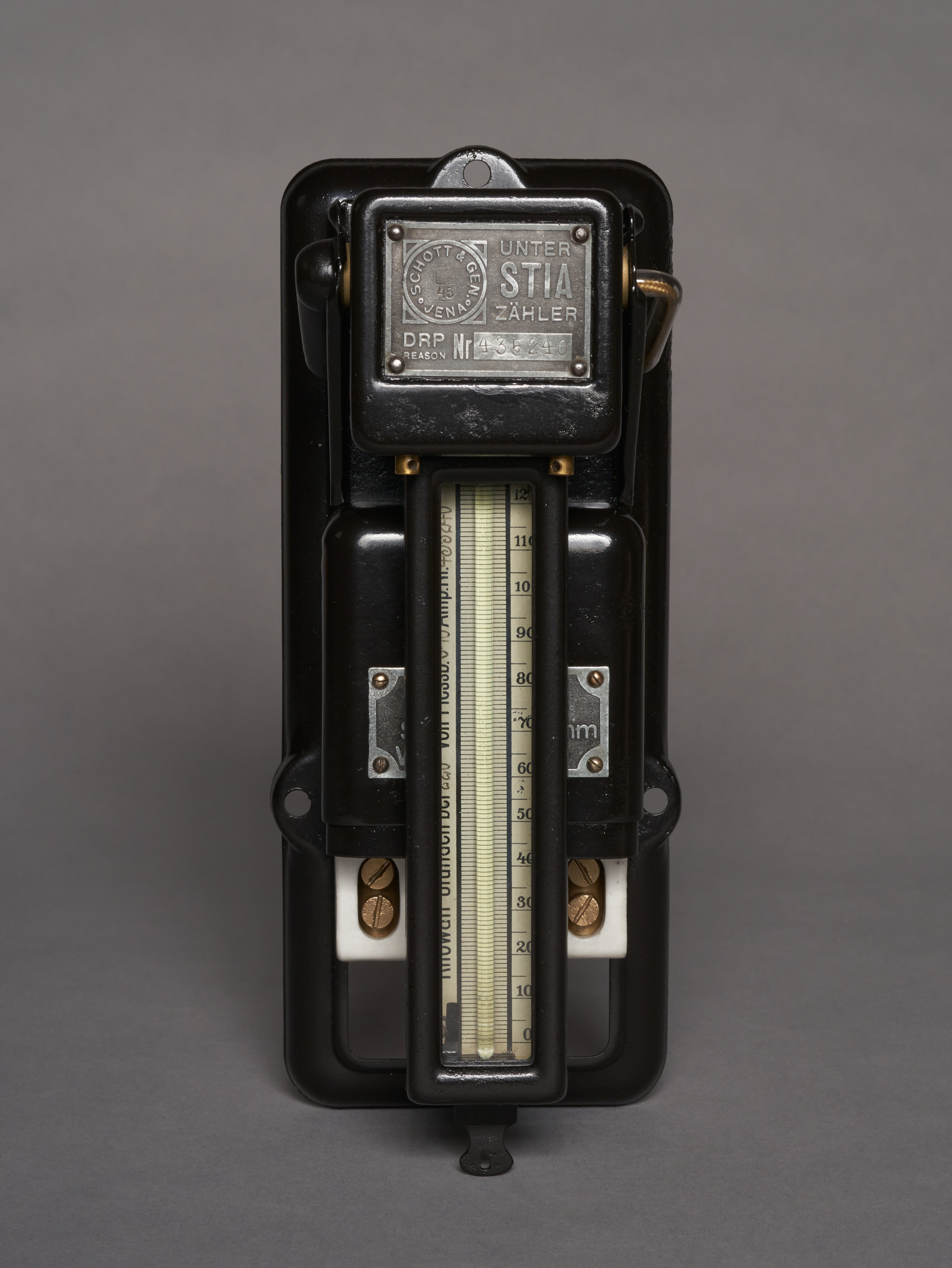
Stia electrochemical (mercury-based) meter for direct current ampere-hours
Schott & Genossen Jena,Creator
Schott & Genossen Jena
Time and place of creation
Place:
Germany
The meter presented here is a device used for measuring direct current ampere-hours consumed by a customer. The apparatus is based on a concept developed by Thomas Edison, who used a phenomenon involving the flow of a material with electrostatic properties between electrodes to measure current. The STIA meter is based on a technology patented by Max Gossman in 1922 and uses the hazardous metal mercury. Current flowing through a container of mercury makes it move along a capillary. For a direct current with a fixed voltage, the amount of metal filling the capillary is proportional to the number of ampere-hours consumed by the customer. The design of the device incorporates a base for the counter that is fixed to the dashboard and, mounted on it with a hinge and tilting upwards, a container with a capillary vessel and scale used for reading the meter. At the end of the accounting period, the counter was reset by an employee of the power plant, who turned it over and poured the mercury back into the container which was then put back into the working position so that measurement of electricity consumption could continue. The mercury-based meter presented here was produced in the German company Schott & Genossen, established in 1884 by Otto Schott, Ernst Abbe and Carl and Roderich Zeiss. The establishment exists still and has dealt with diverse applications of glass in different branches of technology from its very beginnings.
Interesting facts: due to the ease with which the measurements could be forged, meters of this type did not remain in production for long. They were replaced with designs that worked in different ways and free of this important defect from the point of view of the power supplier. Another factor that contributed to the discontinued use of this type of device was the growing popularity of alternating current, which this type of meter could not measure.
References:
From a Glass Laboratory to a Technology Group, official website of Schott, https://www.schott.com/english/company/corporate_history/milestones.html (Accessed: 9.05.2021).
P. Olszowiec, Pomiary energii elektrycznej liczą już 140 lat. Najpierw ważono miedź…, „Energia Gigawat” 2010, nr 1, https://rynek-energii-elektrycznej.cire.pl/pliki/2/pom-energ-el-licza-140-lat.pdf (Accessed: 9.05.2021).
A. Przytulski, Od Edisona do Krukowskiego – krótka historia liczników elektrolitycznych, „Elektroonline.pl” website, 9.04.2010,
http://www.elektroonline.pl/a/1573,Od-Edisona-do-Krukowskiego-krotka-historia-licznikow-elektrolitycznych,,Elektrotechnika (Accessed: 9.05.2021).
Stia electrochemical (mercury-based) meter for direct current ampere-hours
Schott & Genossen Jena,Creator
Schott & Genossen Jena
Time and place of creation
Place:
Germany











